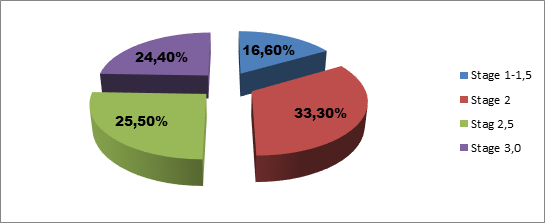-
Paper Information
- Next Paper
- Previous Paper
- Paper Submission
-
Journal Information
- About This Journal
- Editorial Board
- Current Issue
- Archive
- Author Guidelines
- Contact Us
American Journal of Medicine and Medical Sciences
p-ISSN: 2165-901X e-ISSN: 2165-9036
2024; 14(11): 2716-2717
doi:10.5923/j.ajmms.20241411.07
Received: Oct. 12, 2024; Accepted: Nov. 2, 2024; Published: Nov. 7, 2024

Clinical and Pathogenetic Relationship Between Cognitive Impairments in Parkinson's Disease
Rakhimbaeva G. S.1, Okhunova D. A.2
1Doctor of Medical Sciences, Professor, Tashkent Medical Academy, Tashkent, Uzbekistan
2Researcher, Tashkent Medical Academy, Tashkent, Uzbekistan
Correspondence to: Rakhimbaeva G. S., Doctor of Medical Sciences, Professor, Tashkent Medical Academy, Tashkent, Uzbekistan.
| Email: |  |
Copyright © 2024 The Author(s). Published by Scientific & Academic Publishing.
This work is licensed under the Creative Commons Attribution International License (CC BY).
http://creativecommons.org/licenses/by/4.0/

In this abstract presents the relationships between a development of cognitive impairment and the stage of Parkinson's disease. For determined the stages of the disease according to the Hoehn and Yahr scale we divided patients into four groups. Also for analyses we used Parkinson’s disease cognitive rating scale and Montreal Cognitive assessment scale.
Keywords: Parkinson’s disease, Hoehn Yahr, dementia, PD-CRS
Cite this paper: Rakhimbaeva G. S., Okhunova D. A., Clinical and Pathogenetic Relationship Between Cognitive Impairments in Parkinson's Disease, American Journal of Medicine and Medical Sciences, Vol. 14 No. 11, 2024, pp. 2716-2717. doi: 10.5923/j.ajmms.20241411.07.
1. Introduction
- Parkinson's disease (PD) is a chronic, progressive degenerative disease of the central nervous system. Clinical manifestations of the disease include disorders of voluntary movements, such as bradykinesia, tremor, rigidity, and postural instability. Due to the fact that the number of people suffering from PD is growing every year, an urgent question arises about possible ways to predict and prevent this disease. Many studies say that patients with PD in the early stages of the disease have nonspecific neurodynamic changes, which affects cognitive impairment and leads to deterioration as the disease progresses [1,3].Purpose of study. To investigate the relationship between the severity of motor disorders and cognitive impairment in Parkinson's disease.
2. Materials and Methods
- We examined 90 patients with PD in the clinic of the Tashkent Medical Academy in the neurology department. The patients were divided by stages of the disease according to the Hoehn and Yahr scale. The patients also underwent neuropsychological tests to identify cognitive impairment and dementia. Such scales as PD-CRS (Parkinson’s disease cognitive rating scale, MOCA (Montreal Cognitive Assessment) scale.The main criteria according to the above standards are:• Gender and age of the patient. We have identified both male and female patients according to the standards. The age was verified within 41-75 years.• Each case, after the examination and diagnosis, was necessarily compared with the criteria established in ICD-10. Comparison was also carried out with the brain bank of the Parkinson's Society [2].• Evaluated according to the Hoehn Yahr scale: I-IV stages inclusive.• Evaluation of patient mobility according to the independence criteria: yes/no.
3. Results and Discussion
- We determined the stages of the disease according to the Hoehn and Yahr scale; as a result, the patients were divided into the following groups: stage 1-1.5 was diagnosed in 15 (16.6%), stage 2 - in 30 (33.3%) patients; also stage 2.5 - in 23 (25.5%) patients, and stage 3.0 - in 22 (24.4%) patients (Figure 1).
 | Figure 1. Parkinson's disease stages according to the Hoehn and Yahr scale |
|
|
4. Conclusions
- Thus, in the late stages of the disease, cognitive impairment increases, starting with neurodynamic impairment and ending with subcortical-frontal dementia.
 Abstract
Abstract Reference
Reference Full-Text PDF
Full-Text PDF Full-text HTML
Full-text HTML
